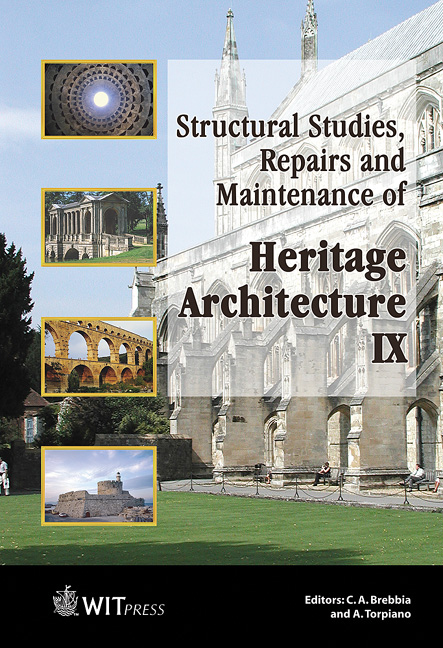Preliminary Evaluation Of The Seismic Vulnerability Of The Inca’s Coricancha Temple Complex In Cusco
Price
Free (open access)
Transaction
Volume
83
Pages
9
Published
2005
Size
1,608 kb
Paper DOI
10.2495/STR050241
Copyright
WIT Press
Author(s)
C. Cuadra, Y. Sato, J. Tokeshi, H. Kanno, J. Ogawa, M. B. Karkee & J. Rojas
Abstract
Coricancha was probably the most important Inca temple complex dedicated primarily to Inti, the Sun god. At present, a small part of the Inca stonework is all that remains of the ancient complex. Most of the complex was demolished by Spaniard conquistadors in the 17th century to make way for the construction of Catholic Church of Santo Domingo on this site, using part of the Inca construction as the foundation. This complex is a fine example of how Inca stonework had been incorporated into the structure of a colonial building. Major earthquakes have severely damaged the church, but the Inca stone walls, built out of huge, finely cut tightly-fitting blocks of stone, still stand as a testimony to Inca’s architectural skills and sophisticated stone masonry practice. In this complex, a series of microtremor measurements were carried out to estimate the dynamic characteristics of the structures and the ground. Measurements on buildings include the Inca’s masonry walls as well as the tower of the colonial church. Measurements to estimate the ground characteristics were performed in the inner yard and at the outer garden of the complex. In this paper, the results of the measurements and corresponding interpretations are discussed. It was found that the predominant period of vibration of the church tower is comparable to the predominant period of the ground, and therefore, the tower appears to be more vulnerable to earthquake occurrence because of the possible resonance phenomenon to be expected.
Keywords




